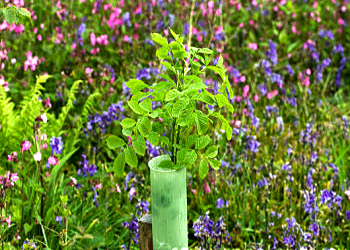 Restoration of deforested trees
Forest restoration may include simply protecting remnant vegetation (fire prevention, cattle exclusion etc.) or more active interventions to accelerate natural regeneration, as well as tree planting and/or sowing seeds of species.
Restoration of deforested trees
Forest restoration may include simply protecting remnant vegetation (fire prevention, cattle exclusion etc.) or more active interventions to accelerate natural regeneration, as well as tree planting and/or sowing seeds of species.
Throughout the biosphere, human activities are altering trophic structures, energy flow, chemical cycling, and natural disturbances – ecosystem processes on which we and other species depend. The amount of human–altered land surface is approaching 50%, and we use over half of all accessible surface fresh water. In the oceans, stocks of many fishes are being depleted by over harvesting, and some of the most productive and diverse aquatic areas, such as coral reefs and estuaries, are being severely stressed.
By some estimates, we are in the process of doing more damage to the biosphere and pushing more species toward extinction than the large asteroid that may have triggered the mass extinctions at the close of the Cretaceous period 65.5 million years ago. Globally, the rate of species loss may be as much as 1,000 times higher than any time in the past 100,000 years. The adjacent figure shows an ash tree (Fraxinus excelsior) seedling, growing in a protective plastic sleeve. It has been planted in woodland which has been deforested (Deforestation is the removal of a forest or stand of trees where the land is thereafter converted to a nonforest use ). The
colonisation of tropical Pacific Islands by humans is said to have led to
the extinction of more than 2,000 species of native birds. The IUCN Red
List (2004) documents the extinction of 784 species (including 338
vertebrates, 359 invertebrates and 87 plants) in the last 500 years. Some
examples of recent extinctions include the dodo (Mauritius), quagga
(Africa), thylacine (Australia), Steller’s Sea Cow (Russia) and three
subspecies (Bali, Javan, Caspian) of tiger.
In this chapter, we will take a closer look at the biodiversity crisis and examine some of the conservation and restoration strategies that biologists are using in attempting to slow the rate of species loss.